Sally Murphy's Blog, page 31
November 9, 2017
Poetry Friday: The Newspaper
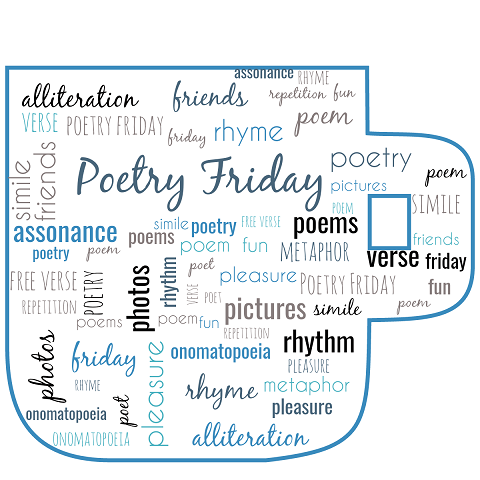
It’s Poetry Friday. I hope you like my new logo for my weekly post.
I’ve been browsing through some of my older poems, published or unpublished. One of the wonderful things about being a poet, is that, if you write regularly you have hundreds and hundreds of poems, of different lengths and styles and structures and topics and even of different quality. But when I opened the poem I am going to share today, one particular thing struck me. I’ll let you read it, and then I’ll tell you what I wondered.
The Newspaper
The newspaper
has comics
and horoscopes
births
and deaths
sport
TV
weather and
advertisements
kids pages
and competitions
lost and found
jobs
public notices
and news.
(Poem Copyright Sally Murphy.)
Did you wonder the same thing I did? The thing that struck me is, that although this poem was written only 9 years ago, it might be a poem which many may young readers would not relate to. Why? Because printed newspapers are becoming less a part of everyday life, and a consequence of this is that even some of the subjects I mention might not be the newspaper a child might observe. And, though this thought came later, a lot of the ‘news’ in the newspaper is not new at all – because we have so much access to almost-instant news through the internet and television.
And then of course I wondered if poems really do become outdated. When I was a child, I read poems about things that were not part of the contemporary world – nursies and counterpanes in R. L. Stevenson’s poetry, for example. But what I loved anyway was the structures and the words. I loved the word counterpane long before I understood what one was! And of course there is poetry that goes back way way way before that.
What ‘old’ poems do you still connect with? I’d love to hear.
Today’s Poetry Friday roundup is hosted by Jama at Alphabet Soup. Head over there to see what other poetry goodness is on offer around the blogosphere today.
November 8, 2017
Amazing Sharjah!
I have just returned from eight days in Sharjah, one of the Emirates in the United Arab Emirates. As the guest of the Sharjah Book Authority, I attended the first six days of the Sharjah International Book Fair, where my mind was well and truly blown.
The Bookfair, one of the largest in the world, is like nothing I have ever experienced. With a combination of rights fair, literary festival, bookshops, cooking show, library seminar, kids’ section and more, it is hard to explain the scale of this event.
The massive Sharjah Exhibition Centre is filled with row after row after row of booths and stalls, from publishers from around the world, to booksellers, government agencies, cultural organisations and more. A Kids’ Activity area boasts smaller rooms where a wide range of activities from writing and illustration workshops, to science demonstrations and craft, an open area with lots of hands on activities and a theatre with stage shows. Last year the fair was visited by over 2 million people over its eleven days, and, if the first six days are anything to go by, this year’s numbers will be just as high. And not only do the people come, but they buy books (lots of books!) and participate enthusiastically in all of the events.
Twice each day I ran writing workshops in the kids’ area, with three different topics: Perfect Plotting, Writing A poem About YOU, and But I Don’t Know What to Write. At times my room was packed, with parents or children who had missed a spot participating through the open ‘windows’ of the room.
When I wasn’t running workshops I was lucky enough to meet other presenters from around the world and also chatted to publishers, booksellers, academics, journalists and more as I browsed the trade fair. It was fun, inspiring and, quite simply, amazing! I was sad to leave it behind, but, of course, happy to get home to my family. And I’m sure this won’t be my last visit to the wonderful Sharjah.
Here’s a little glimpse of some of what I managed to capture photographically.
November 6, 2017
Teacher Tuesday: Using Toppling in a Year 6 Classroom
Welcome to the sixth edition of Teacher Tuesday, where I match one of my books to a year level, and offer some activities for sharing the book in the classroom. In previous weeks I shared activities for Pearl Verses the World, Looking Up, Do Not Forget Australia, Snowy’s Christmas and The Floatingest Frog.
This week, continuing my focus on verse novels, I am focusing on my second verse novel, Toppling.
Using Toppling in a Year Six Classroom
Toppling, by Sally Murphy, illustrations by Rhian Nest James
Published by Walker Books, 2010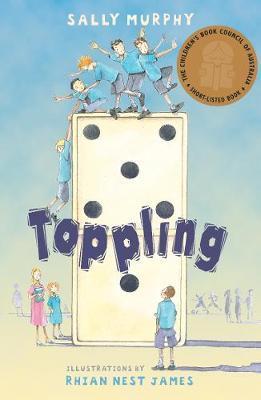
ISBN: 9781921529429 (Paperback)
Format 128 page Paperback, RRP $16.99
US and UK Editions also available.
Blurb: John’s friend Dominic becomes ill, John’s world begins to topple. A warm story about the importance of friendship.
Sally’s Recommended Grade Levels: Year 4- Adult, but these suggestions focus on Year 6.
Themes/Topics:
Friendship
Belonging
Childhood Illness
Family
Empathy and Compassion
Poetry
School
Publisher teaching notes available HERE.
Curriculum Links:
Year 6 English
Make connections between students’ own experiences and those of characters and events represented in texts drawn from different historical, social and cultural contexts (ACELT1630)
Analyse and evaluate similarities and differences in texts on similar topics, themes or plots (ACELT 1614)
Before reading: set up individual journals OR a special section is students’ writing journals. During reading: after reading each section, have students write about their responses to the story so far. Although you could provide questions for guidance, if possible allow students to write about any aspect of the story that appeals to them. After each writing session, allow time for group/class discussion, encouraging links to students’ own experiences.
Ask students to identify other books which deal with childhood illness from their previous reading, OR have a wide range of these available in the classroom. There is a list HERE you could use a starting point. In groups, have students brainstorm similarities and differences between Toppling and the books they have read. This could work either with each group working on a different book, or with each group allocated a book, or with reference to a book previously read as a class book. Students to then prepare a report back to the class, explaining similarities and differences.
Focus on hobbies. Toppling deals with some difficult topics. Some work on the lighter aspects of the book can help alleviate this and offer varied activities. Discuss John’s toppling hobby, view big topples on Youtube and, if possible, have dominoes available the classroom for either free time or for science and mathematics activities. Have students talk about their own hobbies- especially non-digital ones. Students can prepare mini-presentations which explain their hobby, or an unusual hobby they have learnt about.
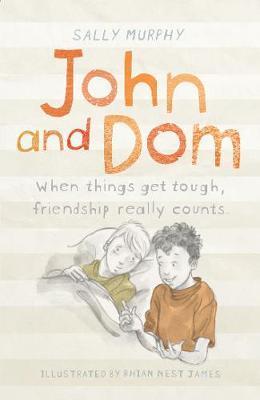
Identify, describe, and discuss similarities and differences between texts, including those by the same authoror illustrator, and evaluate characteristics that define an author’s individual style (ACELT1616)
Analyse how textstructures and language features work together to meet the purpose of a text (ACELY1711)
Analyse strategies authors use to influence readers (ACELY1801)
Understand how authors often innovate on text structures and play with language features to achieve particular aesthetic, humorous and persuasive purposes and effects (ACELA1518)
During reading introduce students to the terms ‘free verse’ and ‘verse novel’. After reading use groups to establish similarities and differences between verse novels and prose novels. Discuss findings.
After reading, revisit and analyse key scenes: p. 9 (opening page), pp 43-46 and pp 15-17 contrasted with p.62-63. Have students focus on which techniques are used in these scenes which might be poetic rather than narrative techniques, and how these techniques influence our connection and reaction to the events. Report or journal writing: how has Sally Murphy used poetry to explore the difficult topic of childhood cancer?
A term unit could encapsulate reading of one or both of my other two verse novels, Roses are Blue and Pearl Verses the World, allowing time for examination of similarities and differences between the three books via group work, or class boards. A verbal or digital presentation examining Sally Murphy’s Individual Style could meet other learning outcomes in multiliteracies, technology or speaking.
Identify the relationship between words, sounds, imageryand language patterns in narratives and poetry such as ballads, limericks and free verse (ACELT1617)
Createliterary texts that adapt or combine aspects of texts students have experienced in innovative ways (ACET1618)
Experiment with textstructures and language features and their effects in creating literary texts, for example, using imagery, sentence variation, metaphor and word choice (ACELT1800)
Plan, draft and publish imaginative, informative and persuasive texts, choosing and experimenting with textstructures, language features, images and digital resources appropriate to purpose and audience (ACELY1714)
During or after reading revise or introduce devices including simile, metaphor, personification, onomatopoeia, repetition, tricolon. Use examples from the book, or have students identify them in the book. Experiment with each form either in journals or on worksheets or display boards. If you have space on your pin up boards, have places where students can write examples of each device on strips of paper or sticky notes and build up a bank of examples.
Examine the elements of free verse poetry (this link here is a simple starting point). Write lots of poems: there are many great lesson ideas on this site, from Australian poets.
After reading and examining author style, have students experiment with writing about their own lives in free verse. Draw on journal writing tasks completed during reading. Structure this activity by allowing time for discussion ingroups of possible topics, experimenting with how to tell veracious parts using poetic devices, then drafting and revising poems.
Have students write poems mimicking my style to tell a key event from the point of view of another character: Tess, Dominic, Mum, Miss Timms etc. Produce a class collection entitled Toppling: The Untold Story.
Other suggestions for using Toppling in your classroom include:
Toppling can be used as a springboard to building empathy, and to understand differences between sympathy and empathy, outside of the literacy classroom.
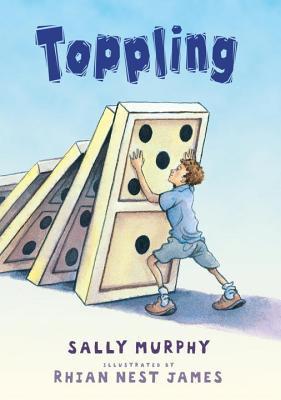
Show students the cover and blurb for the UK edition of the book, which is titled John and Dom, and the US, still titled Toppling but with some cover differences. Explain that the story inside is the same: itis only the cover that has changed. Discuss students’ preferences. Have them design a new cover for the book, or a different cover for another book they have read.
Email the author (that’s me!) Your students can write to me through this website, and share their responses or ask questions.
Related Books (these are all verse novels)
Roses are Blue, by Sally Murphy, illustrated by Gabriel Evans
Pearl Verses the World, by Sally Murphy, illustrated by Heather Potter
Runaways by Sherryl Clark
The Spangled Drongo by Steven Herrick
Forget Me Not, by Ellie Terry
Mostly, I’d love to remind you that while I love to see my books used in classrooms, I also love to see kids just enjoying them. Reading a book should be pleasurable – whether it’s being used in the classroom or not. So allow your students to enjoy reading Toppling.
If you find this useful, or have any suggestions or comments, do leave a comment. And, if there is a particular book or year level or topic that you would like covered in a future edition of Teacher Tuesday, let me know.
November 2, 2017
Poetry Friday: First Swim
It’s Poetry Friday and, as the weather here starts to warm up, my thoughts have turned to swimming. I’m lucky enough to be able to swim all year round in my local heated pool, and I love that, but I really really love to swim in an outdoor pool or at the beach.
When I was growing up, we lived in the same street as the local pool. That was wonderful, but the pool was not heated, which meant that it was only open for about four months of the year. SO, it didn’t matter whether it was really warm enough, or whether the water had reached a decent temperature, on the first day the pool opened I was there. Today’s poem is about that experience, that feeling. I hope you like it.
First Swim

Not a swimming photo – since I couldn’t find one – but some flowery balls of sunshine from the garden to brighten your day, wherever you are.
Summer’s here
and I rejoice
to see the OPEN sign outside the pool.
Blue water beckons
and once I’ve paid
I dump my towel and rush
to greet my old friend.
SPLASH!
Bliss bubbles and bibbles
as I plunge into icy depths.
(Poem and photo copyright Sally Murphy)
Do you love to swim? Or is there something else that you eagerly anticipate with the changing of the seasons? I’d love to hear about it.
Have a wonderful Friday. Today’s Poetry Friday roundup is hosted by Teacher Dance. Head over there to see what other poetry goodness has been shared on the blogosphere.
A Visit to Doonside, and an Adventure with Flat Stanley(s)
I love the author life. Sometimes I have to remind myself that what I do is work.
Last week I had a flying visit to Sydney. I flew over, spent a day working on a school, another day checking in with two of my publishers, and on the third day visited some of my favourite Sydney landmarks. Throw in a catch-up with two of the most wonderful friends a person could want to have- both fellow authors – and I had the perfect combination of work and pleasure.
The purpose of the trip was to visit St John Vianney’s Primary in the suburb of Doonside. There I worked with the year 5 students in a whole day workshop. We explored Do Not Forget Australia,and the story behind it, and by the end of the day every child had written at least two new poem drafts. These young writers were keen,passionate and amazing, and their teachers were pretty special too.
An added, unexpected, bonus was the opportunity to meet the two year one classes who, with the help of the librarian, crashed my workshop to each shake my hand, introduce themself and hand me a Flat Stanley they had cut out and coloured in. I had told the librarian how much I remembered Flat Stanley from my childhood, and this had given her the idea. The children, she told me later, were just excited to think that Flat Stanley might travel in a plane. But then another teacher told me that there were many children living in the Western Suburbs of Sydney who might ever have seen landmarks such as the Sydney Harbour Bridge. And an idea formed.
So,for the remainder of my trip, wherever I went, Flat Stanley went, too. I did attract plenty of funny looks, but I had lots of fun,and I think Stanley did,too.He even met up with Sage Cookson along the way.
Here’s what I ended up with:
;
The final video was, I must confess, put together on a plane and,as such, I can see a couple of flaws I would have fixed had I had more clicking space for the mouse, and better eyesight to spot a couple of proofreading and resolution issues.But, alas, I saved the project to video format without saving it in editable format.
Still, I had fun,and hope the children enjoy what I have done.
October 31, 2017
Book Day: Sage Cookson’s Latest Adventure released Today
Jingle all the way,
Sage Cookson’s Christmas Ghost
Is released today!
That’s right folks. It’s a new month and I am really excited to announce that the sixth title in the Sage Cookson series is now available. This time, Sage heads to Mundaring, near Perth, to witness an attempt to make a world record sized pavlova. But, of course, not everything goes according to plan. Could there really be a ghost getting in the way? It;s up to Sage to find out.
Available in all good bookstores, or online here, Sage Cookson’s Christmas Ghost is suitable for ages 6 and up.
Now, sing it with me:
Jingle bells, Jingle bells
Jingle all the way,
Sage Cookson’s Christmas Ghost
Is released today!
HEY!
What I Read in October

I’ve had a very busy October, which is wonderful, but has impacted on the number of books I got through this month. Still, there are some amazing titles in the thirteen books I did read. From the Cutting Room of Barney Kettle made me cry. It’s only the second Kate De Goldi book that I have read, but it won’t be the last. Braving the Wilderness also introduced me to a new author, researcher Brene Brown. I am so glad my friend Sue recommended Brene’s work to me. Her examination of aspects of belonging spoke so much to me, and I have a second book loaded onto my Audible account to listen to. Here’s the lists of what I got through in October, with links either to my reviews or to where you can find them online.
Picture Books
Eric the Postie, by Matt Shanks
Younger Readers
Dinosaur Trouble: The Great Egg Stink, by Kyle Mewburn & Donovan Bixley
Dinosaur Trouble: The Lava Melt Shake, by Kyle Mewburn & Donovan Bixley
From the Cutting Room of Barney Kettle, by Kate de Goldi
To the Moon and Back, by Dianne Bates
Clockwork, by Philip Pullman
Young Adult
Dreamology, by Lucy Keating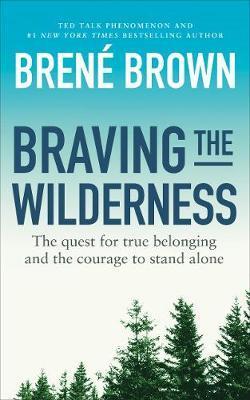
Adult
No Matter What!, by Lisa Nichols
Half Wild, by Pip Smith
The Figures on the Lake, by Peter O’Shaughnessy
Braving the Wilderness,by Brene Brown
5000 Words per Hour, by Chris Fox
How to Make a Living with Your Writing: Books, Blogging and More[image error], by Joanna Penn
Have you read any of these, or do you have another recommendation for me? I’d love to hear from you.
October 30, 2017
Teacher Tuesday: Using Pearl Verses the world in a Year Five Classroom
Welcome to the fifth edition of Teacher Tuesday, where I match one of my books to a year level, and offer some activities for sharing the book in the classroom. In previous weeks I shared activities for Looking Up, Do Not Forget Australia, Snowy’s Christmas and The Floatingest Frog.
This week, per a request from a year 5 teacher, I am focusing on my verse novel, Pearl Verses the World.
Using Pearl Verses the World in a Year Five Classroom
Pearl Verses the World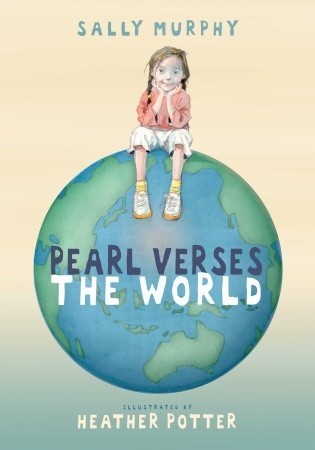 , by Sally Murphy, illustrations by Heather Potter
, by Sally Murphy, illustrations by Heather Potter
Published by Walker Books, 2009
ISBN: 9781921150937 (Paperback)
Format 80 page Paperback, RRP $14.95
US and UK Editions also available.
Blurb: At school, Pearl feels as though she is in a group of one. Her teacher wants her to write poems that rhyme but Pearl’s poems don’t. At home, however, Pearl feels safe and loved, but her grandmother is slowly fading, and so are Mum and Pearl.
Sally’s Recommended Grade Levels: Year 2- Adult, but these suggestions focus on Year 5.
Themes/Topics:
Belonging
Family
Aging/Dementia
Death
Empathy and Compassion
Poetry
School
Publisher teaching notes available HERE.
More wonderful teaching ideas HERE.
Curriculum Links:
Year 5 English
The following ideas can be used separately, choosing just those which fit your classroom needs. However, this unit offers an opportunity for regular journal writing activities. As such, setting up a special writing book (or section of an existing daily writing book) for each child before reading begins, and then using it throughout reading could add an extra dimension to a novel study.
Understand how texts vary in purpose, structure and topic as well as the degree of formality (ACELA1504)
Clarify understanding of content as it unfolds in formal and informal situations, connecting ideas to students’ own experiences and present and justify a point of view (ACELY 1699)
Before reading:
Journal writing. In the days/weeks before introducing the book, have students write on one or more of the following questions: What kinds of books do you like to read? Do you like reading poetry? What does it mean to be lonely? After each journal writing activity, provide opportunities for sharing in groups or in class discussion.
Show students the cover of the book. Discuss reactions to the title, the front cover illustrations and the blurb. The blurb includes the word ‘poignant’. Discuss what this might mean. Journal writing: Make a prediction. What do you think Pearl Verses the World might be about?
During Reading
Read pages 7 to 11, finishing with “Which made her poor teacher go hurl.” Discuss what has happened so far. Why is Pearl lonely? How does she feel about poetry? Does poetry have to rhyme? The last five lines are a limerick. Discuss whether that part rhymes. Who is speaking/writing the limerick?
Journal writing: Pearl is in a group of one. Do you belong to any groups at school? Do you think your own class has groups?
Read pages 11 to 17. Recap events. Discuss the revelations about what is happening at home. Focus on what we now know about Pearl’s life. Encourage connections to children’s own lives re family structures, illness, loneliness, but also the happy stuff like spinning.
Journal Writing: Which part of Pearl’s story so far do your feel reflects your own life? How does that make you feel? Pearl loves spinning. What is your favourite movement: running/jumping/skipping/standing still? Write about that movement and how it makes you feel.
Read pages 18 to 26. Recap events. Discuss, again encouraging responses and connections to students’ lives and experiences. Explore Pearl’s relationship with Prudence Jones and with Mitchell Mason. Other areas to highlight in discussion include the swimming and library scenes. Discuss how Pearl feels about poetry. In groups or as a class discuss what makes a poem, building on earlier discussion.
Journal writing: Do you like poetry/ Why/why not? What kinds of poetry? What makes a good book? Write about your favourite book.
Read pages 27 to 35. These are some difficult pages so, before reading, have students ready their journals and writing materials. Tell them that, after you have read the pages you want them to write their responses in their journals FIRST and then discuss them after. After reading the pages, repeat the instruction. Give time to write about how they feel about what is happening to Granny, Pearl and Mum. After writing, group of class discussion about what has happened.
Repeat this process for pages 37 -50, 51-64 and 65 to 73.
Read pages 74 to 74. Discuss ending. Discuss: Is this a happy ending, or not? Could it have ended differently? How did students feel about the ending?
Journal writing: Do stories need to have happy endings? Why/Why not. Write a new scene, either changing the ending, or showing a scene in Pearl’s life a month/year after the story ends.
Present a point of viewabout particular literary texts using appropriate metalanguage, and reflecting on the viewpoints of others(ACELT1609)
Use metalanguageto describe the effects of ideas, text structures and language features on particular audience (ACELT 1795)
Plan, rehearse and deliver presentations for defined audiences and purposes incorporating accurate and sequenced content and multimodal elements (ACELY1700)
During reading introduce students to the terms ‘free verse’ and ‘verse novel’. After reading use groups to establish similarities and differences between verse novels and prose novels.
In groups, students to decide which form they prefer and prepare a presentation to class explaining why.
As a follow up, brainstorm arguments from both sides.(In my ideal world, class would arrive at the realisation that one form is not better than another, but offer different strengths). Discuss whether pearl verses the World might have been as effective written in prose.
Journal writing: Rewrite a scene in prose. Write a book review of Pearl verses the World.
Understand, interpret and experiment with sound devicesand imagery, including simile, metaphor and personification, in narratives, shape poetry, songs, anthems and odes (ACELT1611)
Createliterary texts that experiment with structures, ideas and stylistic features of selected authors (ACELT1798)
Plan, draft and publish imaginative, informative and persuasive print and multimodal texts, choosing textstructures, language features, images and sound appropriate to purpose and audience (ACELY 1704)
Either during reading or after, examine the limerick on p. 11, and limericks from other sources. Us a worksheet like this one HERE to establish how limericks work. Focus on rhyme patterns, rhythm patterns and content before having students create limericks of their own.
During or after reading revise or introduce devices including simile, metaphor, personification, onomatopoeia, repetition, tricolon. Use examples from the book, or have students identify them in the book. Experiment with ach form either in journals or on worksheets or display boards. If you have space on yoru pin up boards, have places where students can write examples of each device on strips of paper or stickynotes and build up a bank of examples.
Examine the elements of free verse poetry (this link here is a simple starting point). Write lots of poems: there are many great lesson ideas on this site, from Australian poets.
Have students create a class poetry book OR individual chapbooks
Other suggestions for using Pearl verses the world in your classroom include:
Pearl Verses the World can be used as a springboard to building empathy, and to understand differences between sympathy and empathy, outside of the literacy classroom.
Pearl Verses the World is wonderful for reading aloud. Use an extract in the drama classroom for students to memorise and perform.
Email the author (that’s me!) Your students can write to me through this website, and share their responses or ask questions.
Related Books (these are all verse novels)
Roses are Blue, by Sally Murphy, illustrated by Gabriel Evans
Toppling, by Sally Murphy, illustrated by Rhian Nest James
On Track, by Kathryn Apel
Sixth Grade Style Queen (Not), by Sherryl Clark
Star Jumps, by Lorraine Marwood
Do Wrong Ron, by Steven herrick
Mostly, I’d love to remind you that while I love to see my books used in classrooms, I also love to see kids just enjoying them. Reading a book should be pleasurable – whether it’s being used in the classroom or not. So allow your students to enjoy reading Pearl Verses the World.
If you find this useful, or have any suggestions or comments, do leave a comment. And, if there is a particular book or year level or topic that you would like covered in a future edition of Teacher Tuesday, let me know.
October 27, 2017
Successful Adulting
As you might know if you visit this site regularly, is that I love to read widely and I love to write all kinds of thing heading with my life, at the same time as exploring my learnings from some difficult times I’ve been through.
I don’t yet know if any of this writing will become a book or not, but I have been enjoying the writing and have also been having fun with posting some of my random thoughts and observations on a new adult-focused Facebook page called Succesfully Adulting. It’s a mix of funny observations, serious ones, and public admission of my attempts to, as the name suggests successfully adult.
Here’s the latest bit I’ve shared on the page, a quote from the amazing Brené Brown a researcher and author who I have only very recently discovered, but who you will soon see featuring in my monthly ‘what I read’ posts.

If you’d like to see what I’m doing on the page, feel free, and feel free to tell me what you think.
In the meantime, enjoy the quote.
October 26, 2017
Poetry Friday: From the Ball of Fluff Under Your Bed
It’s Poetry Friday and I am so glad to be posting for the second Friday in a row, following a big break. This week I was lucky enough to travel to Sydney, and to visit a wonderful school called St John Vianney’s in the suburb of Doonside.
I was there to work with two wonderful year 5 classes, and we spent much of the day reading, writing and talking about poetry. The aim was to get them to have at least one poem drafted by the end of the day. But – amazingly – nearly every child had three poems drafted or started, and every child had two whole poems drafted. That is amazing work and left me filled with joy.
So today I thought I’d share one of my poems which I shared with the children in Doonside. I wanted to model how a free verse poem can be used to explore all kinds of topics, and to see how voice can dictate what we ‘see’ in a poem, but also how it is up to the reader to interact, and it is the reader’s experience of the poem whcih ultimately determines the poem’s reception.
I chose this poem to use, with others, because when I wrote it I thought it was a bit-of-fun poem, but one of my university colleagues, when she read it, saw it as sad because of what it says about a child fearing their parent. She wasn’t wrong, and neither was I: every reader should be allowed to have their own response to what they read. This is an important lesson for poets to learn, whether they be in year 5 or hold a doctorate in poetry.
Amway, here’s the poem. I’d love to hear your response.
From the ball of fluff under your bed

I mean you no harm.
Honestly.
I did not even mean to be here,
brought into simple existence
by your refusal to keep
this part of your bedroom tidy.
Yet here I am,
lurking behind five odd socks
last week’s homework
and a mouldy apple core
(which I wish you’d remove).
Come midnight
I will not transform into a monster
and scare you witless
or drink your blood
or mutter and moan .
No, at midnight –
and at every other hour,
come to think of it –
I will continue to be
just a ball of fluff.
But heed this warning:
even a humble ball of fluff
knows that the time is coming
when you will shake with fear.
Yes – one day,
one day soon
your mother
(perhaps lured by the smell of that apple core)
will lift the edge of your bedspread
and see
the socks
the homework
the apple core
and me.
And then there will be trouble.
(Poem Copyright Sally Murphy)
Today’s Poetry Friday roundup is being hosted by Brenda at Friendly Fairy Tales. Brenda’s contribution is absolutely wonderful – and you might see, as you read it, that I was amazed we had both chosen unusual voices or narrators for our poems. Head over there to see what other poetry goodness is being shared in the blogosphere. Have a great Friday and a great week to come.




